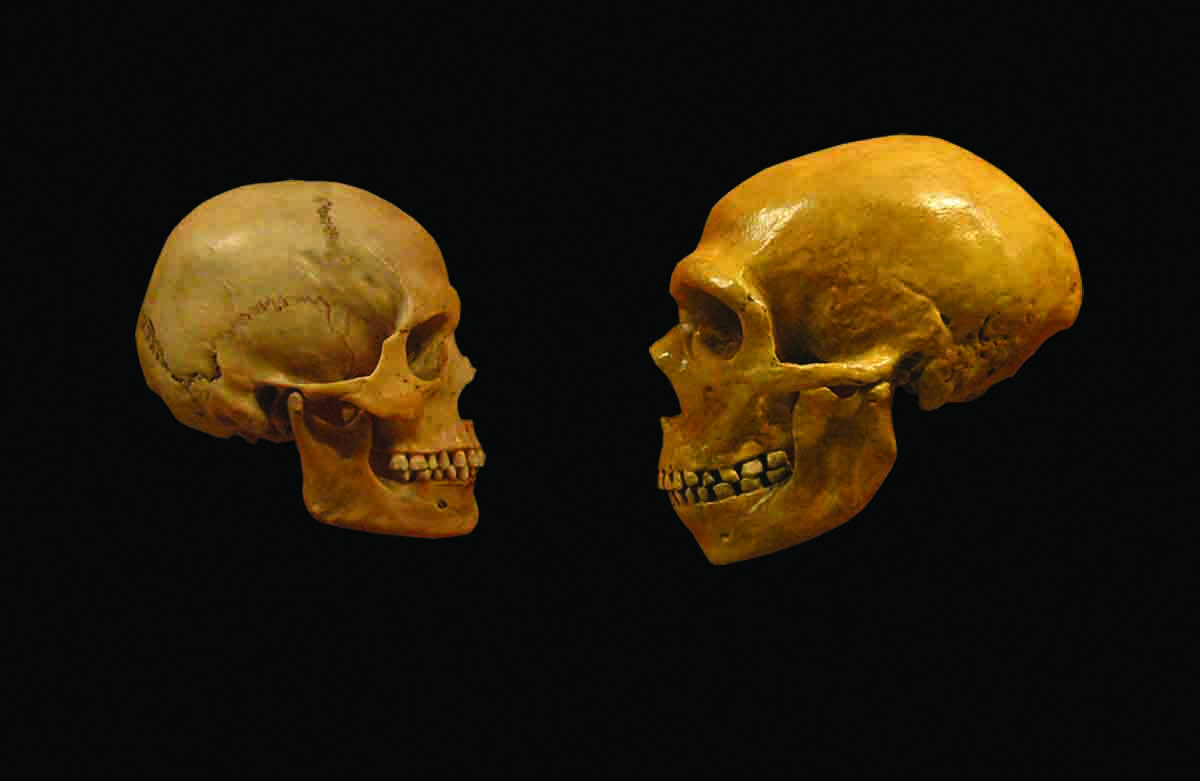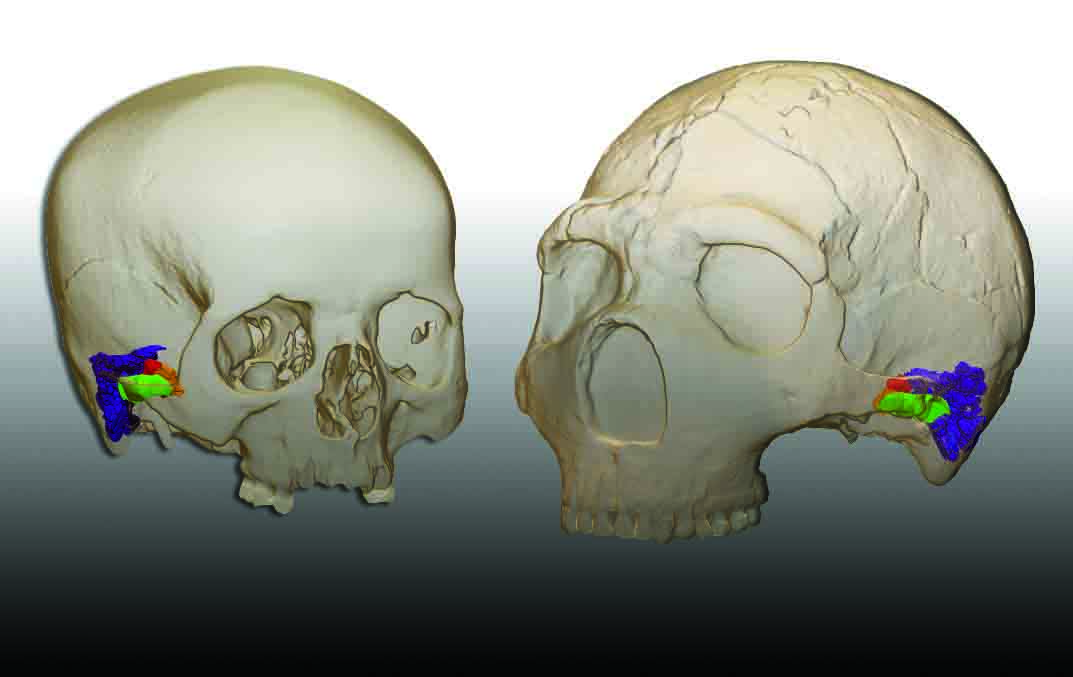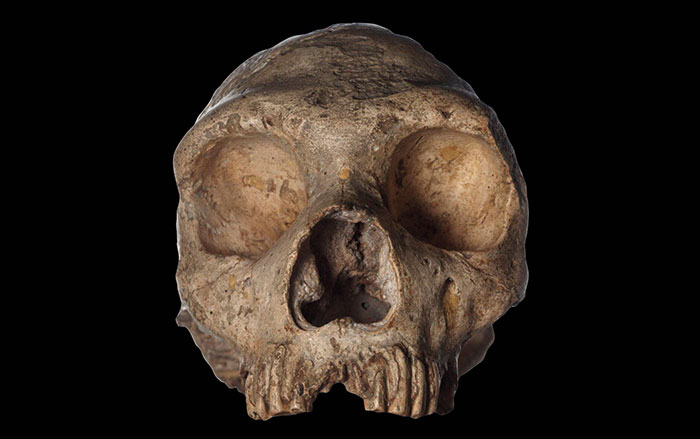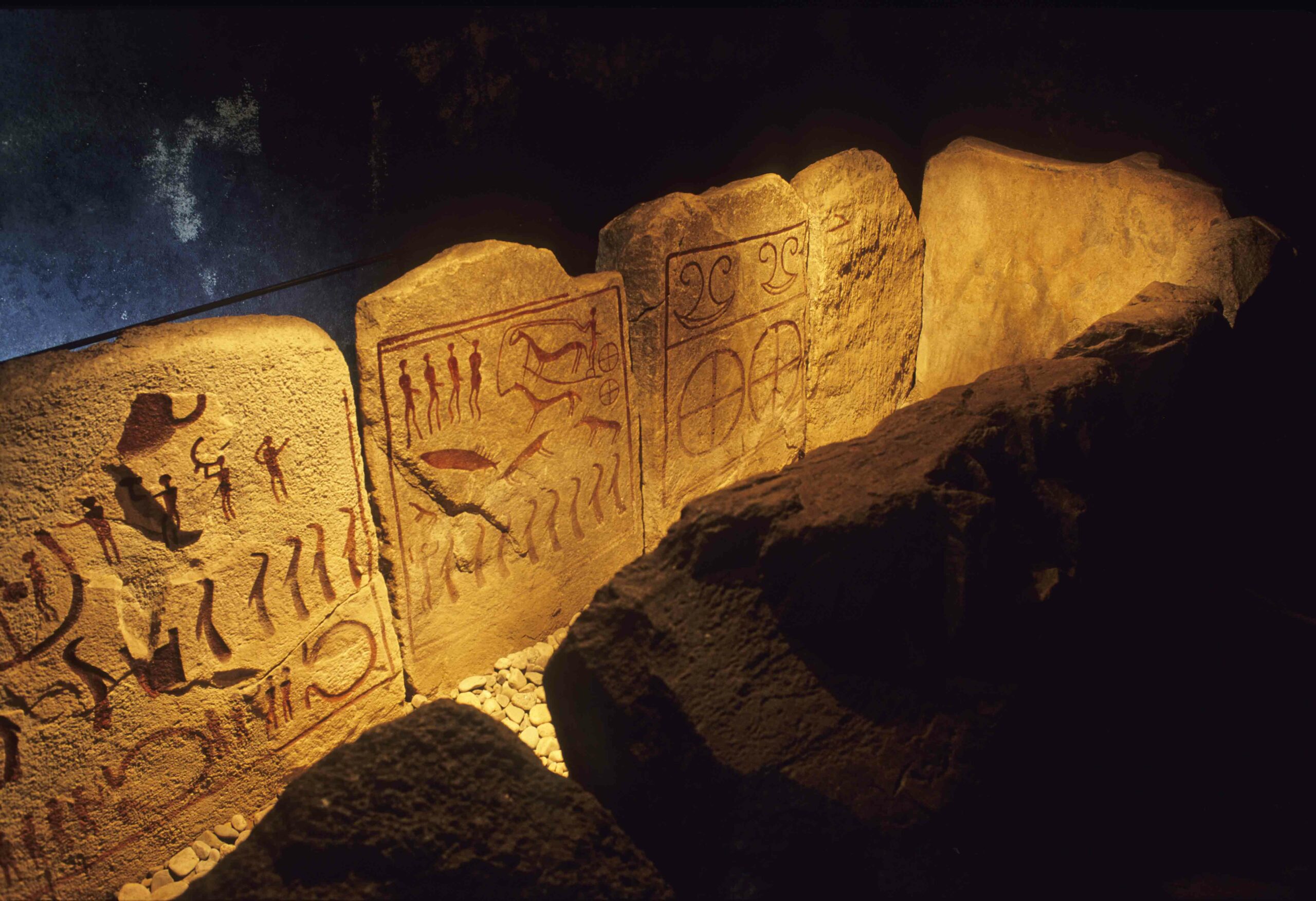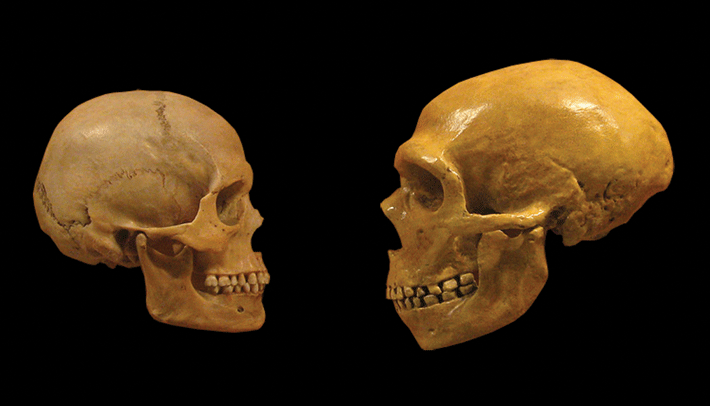
The brains of Neanderthals and ancient humans were remarkably close in volume—roughly 90 cubic inches. But that doesn’t mean they were the same.
Scientists studied 32 human and 13 Neanderthal skulls, 27,000 to 75,000 years old, and found that Neanderthal eyes were, on average, 15 percent larger than those of humans. They attribute this to the Neanderthals’ European origin, where they would have had lower light levels than in Africa, where humans developed. Accordingly, the researchers estimate Neanderthal brains used twice the space for visual processing compared with human brains.
Improved sight was not without its costs—Neanderthals likely had less brain capacity to put toward social interaction. According to University of Oxford anthropology graduate student Eiluned Pearce, Neanderthals are believed to have lived in smaller groups and traveled shorter distances for resources compared to humans. “That suggests that although they interacted with neighboring bands,” she says, “they did not interact with more distant ones, or at least not as frequently as modern humans did.”


